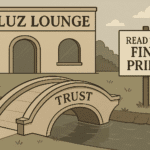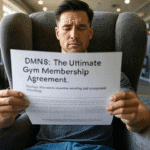For more information, go to www.trustyourtongue.com 
“Wine is bottled poetry.” – Robert Louis Stevenson
What Matters? Have you ever had a really good wine? How about a really expensive one? How about a wine with really high ratings from famous wine critics? Were all three the same bottle of wine? Maybe that expensive and/or highly rated bottle of wine wasn’t really that good for that night, given what you spent and given what you expected. But maybe you were afraid to admit it, fearing you’d only expose your ignorance. After all, everyone else was praising the wine to high heaven. Are you confident enough to trust your taste buds over everyone else’s? And are you truly passionate enough to shout it out loud?
“Whiskey has killed more men than bullets, but most men would rather be full of whiskey than full of bullets.” – Logan Piersall Smith
For some people, the wine’s taste practically isn’t even the point of the experience. That wine cost $100 and it got a 95 rating from somebody important. Hey, you’d better like it. What’s wrong? Don’t trust the expert’s judgment? Drink up! To compound it all, you, the average wine drinker, have more choice than ever. Going to the wine section of your local grocery store can feel like entering the Minotaur’s maze. Bring some yarn, so you can find your way out. But what if you can’t taste the difference? What if that highly rated wine you’ve read so much about is unavailable, at least near you? What if you can’t afford it? And what if it doesn’t fit your sweet tooth or coffee passion or distaste for high alcohol levels? Shouldn’t that make its rating a zero? Sadly, most wines would never earn that rating in this marketplace. The dominant critical voices drown out our own. Even if we don’t like the same kinds of wines that those critics like, we don’t think, “What’s wrong with them?” Rather, we ask, “What’s wrong with me?”
“Who you gonna believe, me or your own eyes?” – Chico Marx
We’re all struggling to figure out what we might actually want to drink, can afford and can find. But keeping track of the latest and greatest in booze can be bewildering: Is a shiraz an Iranian shawl? Does absinthe make the heart grow fonder? Is premier cru the rowing team? Does “first growth” mean they’ve passed puberty? Is a Riesling Kabinett something I could store my German wines in? If vodka is an “odorless, tasteless neutral grain spirit” like the government says, why am I paying so much for bottle service at Hollywood clubs? Am I allowed to like Gewürztraminer if I can’t even spell it? All this uncertainty has fueled a booming business in what I’ll call Booze Crit Lit.
It is an industry riddled with incomprehensible argot, warring schools of thought, and harsh reactions to anyone too persistent in noting the scientific problems with such fundamentals as 100-point scales, gold-medal competitions and the ability to recognize a dozen flavors in one wine. We’re desperate to find tools that will help us find the right wines and spirits. It’s just the current tools aren’t very reliable. Entire sub-disciplines have emerged around tasting, testing, evaluating, classifying, codifying and having an expert opinion about the thousands of wines released each year. And now we have the rise of mixology, as adventurous bartenders combine molecular gastronomy, historical research and new kinds of spirits and ingredients to create tasty, if sometimes unlikely, concoctions far beyond a simple martini or Cosmo.
“The three most astonishing things of the past half-century were the Blues, Cubism and…Polish vodka.” – Pablo Picasso
The sound and fury is so everpresent, we cannot believe it signifies nothing. So we turn to critics and experts whose prominence correlates directly with how complicated, arcane and downright opaque their descriptions are. Our dependence on their opinions has been so substantial that wineries create products specifically to win the critics’ favor, knowing that customers will follow and pay far more for the highly rated stuff. It’s like film studios making movies to appeal to Roger Ebert, knowing millions would not only watch those films, but pay 10 times more for a ticket. This reliance has grown despite increasing evidence that wine judges and critics, even with their deep knowledge and experience, aren’t much more consistent than Joe the Plonk Drinker in their judgments. These judgments are based on the false premise that wine assessment can be absolutely objective. But it absolutely cannot; there’s always a measure of subjectivity, even though our minds seldom reward nuance. Critics’ reliability is secondary to the need they fulfill. You can say the emperor has no clothes, but the masses still yearn for a king they can raise a toast to.
“Then you have The Story of the Emperor Who Had No Clothes… But if you knew a bit more, it would be The Story of the Boy Who Got a Well-Deserved Thrashing from His Dad for Being Rude to Royalty. – Terry Pratchett
Last November, Caltech teacher and author Leonard Mlodinow wrote in the Wall Street Journal (note: we don’t agree with his points on all counts) about studies that found:
- Gold medals seem to be given nearly at random, with any wine regularly entered in competitions having a 9-percent chance of winning in any given tasting.
- A judge’s ratings – for the same wine in different tastings – typically varied 4 points, plus or minus, on a standard scale of 80 to 100. So, in a 20-point range, their rating for a given wine might vary up to 8 points, or 40 percent of the range.
- Expectations can be decisive. Give experienced tasters two glasses of the same wine, but tell them one glass contains an expensive high-end wine and the other a cheap table wine. The drinkers will rate the “expensive” wine significantly higher.
- Wine descriptions typically list as many as eight different flavors, even though studies show even flavor-trained professionals “cannot reliably identify more than three or four components in a mixture,” Mlodinow wrote. And those trained professionals don’t even consistently identify the same components in a given wine.
None of these individually have the same mainstream impact as the Sokal Affair had on postmodern cultural studies or even the same social criticism that Penn and Teller created by peddling “Eau du Robinet” from a garden hose as $10 bottled water. But collectively, we have to start suspecting that Booze Crit Lit may indeed signify a lot less than we thought.
“May you all have champagne for breakfast.” – Freddie Mercury
At the same time, prices this decade have skyrocketed, particularly for the most exalted French and California red wines and French champagnes. The concept of “investment” wines is growing in importance. Yet production also has increased, flooding the market with product even as new growing areas are sprouting up around the world. Anyone with basic economic training (except, apparently, most mortgage bankers) knows what happens when both supplies and prices increase dramatically at the same time: a bubble develops. And what happens when a bubble gets big? It pops. Now, Napa’s “cult cab” cellars and top cru Bordeaux and Burgundy makers are scrambling. Some have cut prices dramatically. Others have cut production, selling off their premium grapes to other winemakers. Either way, getting great juice for far less is far easier than it has been in years. We have seen such a huge shift in the market that Wine Spectator made the rise of “value wines,” even at the high end, a recent cover story.
“Always carry a small flagon of whiskey in case of snakebite, and furthermore, always carry a small snake.” – W.C. Fields
And here’s another big secret: over the past 20 years winemakers worldwide have gotten really good. Even the companies making everyday wines for price-conscious consumers in regional markets are far better than two decades ago. Back then, the market largely consisted of a group of really great wines and a group of really bad wines, with not too much in the middle. Over time, vintages, growing regions and winemaking practices have all evolved to the point where 80 to 90 percent of the value of a wine is so consistently solid, it’s a given, something you can count on just about every year, even for wine that comes in a box. At the same time, information about the remaining 10 to 20 percent – the part of a wine’s flavor shaped by changing weather, winemaker decisions and similar issues – has become instantly available across the Internet. Numerous alcohol-focused websites emerged to connect us to the opinions of others.
Some were created by publications and critics, others by Yelp-like knockoffs fed by the enthusiastic if not overly informed opinions of anonymous boozehounds. Yet, the increase in choice, information, awareness and quality hasn’t led to a proportional increase in consumers’ confidence and ability to choose the right wine for their needs. That’s because the thing missing in all these resources is, well, you. All the Booze Crit Lit resources measure, ultimately, the preferences and idiosyncrasies of a bunch of people who don’t necessarily share your preferences and idiosyncrasies. Their palate is not your palate. Just recently came word that the most influential critic, Robert Parker, had closed the public forum on his online site because of reader pushback on some of his ratings. Did the forums uncork the opinions of the citizen drinker?
Some alternatives are starting to emerge, like CellarTracker (www.CellarTracker.com). Each time you drink a bottle, you record your own observations, likes and dislikes on the site. Over time, you can better understand your own preferences. CellarTracker represents a useful if insufficient step on the path to better tools. Eric LeVine, CellarTracker’s founder and an industry hero, says, “So far, more than 25,000 collectors have recorded 1.3 million wine reviews. Each user tags their favorites and uses information from like-minded collectors and enthusiasts to find new wines that suit their tastes. It’s the truest group of palates, if you must trust someone’s palate before yours.”
“Two key rules of Third World travel: 1. Never run out of whiskey. 2. Never run out of whiskey.” – P.J. O’Rourke
That a great start of finding a better way to enjoy the stuff to drink. I think we can do even more. My main business, RampRate, matches companies seeking information-technology services with vendors that provide those services. We help those companies figure out what’s important to them for, say, online data storage or server capacity or some other IT service. Each client weighs these factors in different ways, creating a unique, specific set of preferences, which we then match against a large group of service vendors to find the best fit. Both sides get a good deal, for exactly what they want and can provide, and can still pay my company a lot of money for the savings and satisfaction they get.
A bottle of wine contains more philosophy than all the books of the world.” – Louis Pasteur
Well, imagine doing the same thing to help you figure out which wines and spirits best fit your preferences, budget and discovery path. For free. Simply speaking, wine Nirvana. That’s what I’m working on now. We need a more fluid marketplace, so to speak, for wine and spirits. I want to empower consumers and trade buyers with not just more information, but with the most pertinent and relevant information about wine and spirits that they, personally, will enjoy. Because, after all, who can you trust, if not yourself?
In part two of this piece, I’ll talk about how we need to fix the broken business model in booze, empowering consumers and innovative producers, connecting them with each other. We are creating a new ecosphere and network that allows the marketplace to flow unimpeded. The laws are changing and we will all benefit. If you want to be among the first to see what we’ve created, go join our mailing list. www.trustyourtongue.com











It is almost impossible to discuss wine nowadays without acknowledging Robert Parker, especially in the context of the democratization of taste that your blog addresses. Your Taste (and, for that matter, CellarTracker, the Parker chat board, etc.) is, to some degree, a reaction to his monolithic influence. On balance, he has been great for wine. While many think his numbering system is too simplistic, he has, without question, brought the overall quality of wine up around the world, and has introduced more people to more wines from every corner of the globe than anyone else. He is wine’s most powerful advocate.
However.
I am always reminding clients that the scores he gives wine are only his opinion. I had dinner with Christian Moueix once. I congratulated him on getting another great review from Parker. He said, “I hate that shit. It’s like me telling you how much you enjoyed your dinner.” And there is a lot of truth to that. In a very literal sense, we all drank the Kool-Aid with some of the wines he gave high scores to, especially when the QPR was so out of whack: Turley, Pax, Australia, Reignac. The list goes on and the debate continues .
However.
On the cover of every issue of The Wine Advocate he states, in bold faced type: However, there can never be any substitute for your own palate nor any better education than tasting the wine yourself.
The thing about Taste is that many wine collectors, especially those getting into the game, take a shotgun approach. They buy this and that, often because of a shelf talker anointing the wine with 91 points. There is no, or little, sense of direction. If you don’t know where you’re going, any road will get you there. At some point, they are exposed to more and different kinds of wine and a taste profile begins to emerge. Out with the merlot, in with the pinot, or something like that. My pitch to clients is that the wine you’ve got helps to define you, much in the same way as the pictures you hang on your walls—they are reflections of your taste. The bottles are like ridges of a fingerprint. You might apply some kind of algorithm to this, I just look at the list and see certain things: when they made their money, how much they are invested in wine as a hobby, and so on. But the main thing that comes from this is: Where do you want to go from here? I try to keep my own taste out of it, but push people to explore the areas that they show interest in.
Follow your bliss, but do it in a more logical, focused, strategic way. New client, major industrialist, says, “You wouldn’t know it, but my interest is in Bordeaux and Burgundy.” Well, how ‘bout you buy some of that? Seems simple enough. The guy is very, very smart, highest level govt security clearance, but he doesn’t buy the kind of wine he likes. Get rid of the shotgun and pick up a rifle.
Jeff Smith
Carte du Vin
Nice!
We say relax and enjoy it — it's just juice.